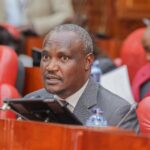Tibet’s Kirti Monastery Stands Firm Under Beijing’s Watch as Dalai Lama Turns 90
Tibet – A nervous monk at , Sichuan, whispered, “Things here are not good for us.” He risks arrest by speaking at all. This speaks volumes about the environment in China’s Tibetan heartland.

Kirti has long sat at the center of Tibetan resistance. In 2008, a monastic protest inside this compound spiraled into a riot and violent clashes with Chinese forces. Official reports suggest 18 deaths, while Tibetan groups report nearly 200 fatalities. Between 2009 and 2018, at least 150 self-immolations took place nearby .

Now, the monastery is encircled by surveillance. A police station stands at its entrance, and steel poles carry cameras. A monk told BBC journalists, “Be careful, people are watching you.”
One monk added: “The Chinese government has poisoned the air in Tibet… It is not a good government.” Another said, “We Tibetans are denied basic human rights. … It is not a government that serves the people.” Their voices were quiet, their words cautious.

A sweeping education law now forces Tibetan youth into Mandarin-language schools and bars religious training for children under 18. A monk, speaking under an umbrella, recounted: “One of the nearby Buddhist institutions was torn down by the government a few months ago. It was a preaching school.”
These moves coincide with China’s broader “Sinicization” policy aimed at aligning religion with Communist Party norms. An anonymous Tibetan source described it as “a threat to the entire survival of Tibetans and Tibet.”

The Dalai Lama’s recent statement, on his 90th birthday, confirming that his reincarnation will occur and be chosen outside China drew immediate backlash from Beijing. His statement stresses sole authority . China’s foreign ministry responded that the next Dalai Lama must follow state-approved rituals inside China .
An expert warned this clash may deepen tensions: Beijing’s insistence on control clashes sharply with Tibetan calls for religious independence .
On the road to Aba, China shows off modern infrastructure: a high-speed railway and new hotels. But this progress comes next to cracked monastery walls and heavy surveillance. Tibetans sit near prayer wheels and talk in coded tones.
The choice of Dalai Lama may become a major flashpoint. Will Beijing accept a leader chosen in exile? Or will two competing spiritual heads emerge one endorsed by China, another by Tibetan Buddhists?
Kirti’s monks seem to sense the stakes. “That’s just the way it is,” said one. “That’s the reality.”
As the 90th birthday celebrations continue in exile, Tibet inside remains under watch. In the shadows of prayer halls and hidden conversations, a deeper struggle plays out over identity, belief, and who will hold the torch next.




















